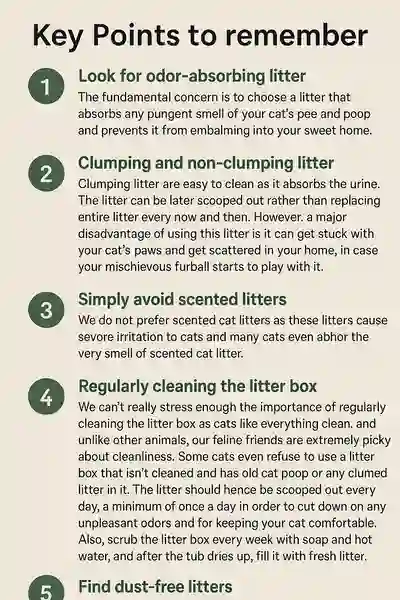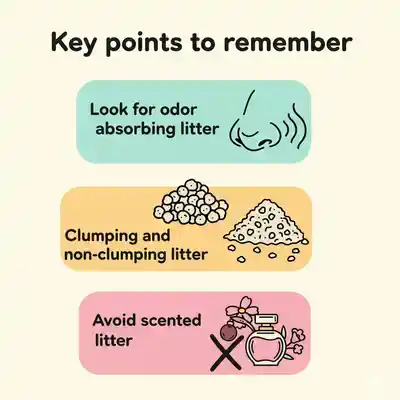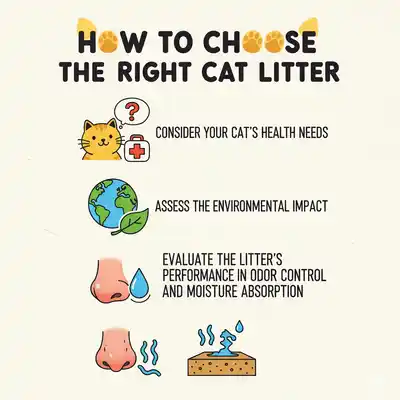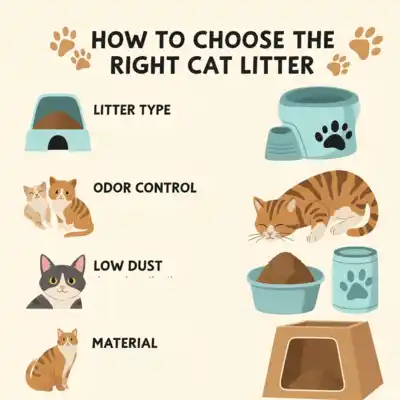How to Choose the Right Cat Litter for Your Feline
Choosing the Perfect Cat Litter: A Comprehensive Guide to Odor Control, Dust Reduction, and Eco-Friendly Options
Are you tired of constantly changing your cat’s litter only to be hit with a wave of unpleasant odors? Choosing the right cat litter can be a daunting task, but it’s crucial for maintaining a clean and healthy environment for your feline friend.
Selecting the ideal litter involves considering several factors, including odor control, dust levels, and eco-friendliness. With numerous options available, cat owners need a comprehensive guide to make an informed decision.
Say Goodbye to Litter Box Odors: How to Select the Best Cat Litter for a Fresh and Clean Home
Understanding Cat Litter Basics
With numerous cat litter options available, understanding the basics is essential. Cat litter comes in various types, each with its unique characteristics, benefits, and drawbacks.
Cat litter can be broadly categorized into different types based on their material and functionality. Some of the most common cat litter types include clumping clay, silica gel, and natural cat litter made from materials like pine, corn, or recycled paper.
Natural cat litter, for instance, is favored for its eco-friendly and biodegradable properties. On the other hand, clumping clay litter is known for its odor control and convenience. Understanding these differences is crucial for cat owners to make an informed decision.
By considering factors like odor control, dust level, and environmental impact, cat owners can choose the most suitable cat litter for their feline companions.
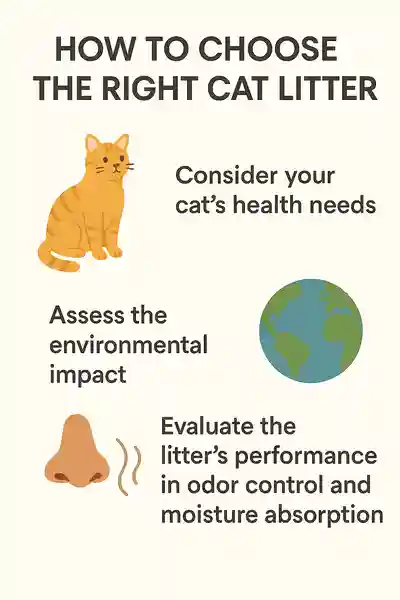
Different Materials of Cat Litters
- Traditional clay-based litter Clay has always been the most popular kind of litter in the market and works well for most cats. It quickly absorbs water and urine, but clay litter is dusty. In case your cat has respiratory problems and is allergic to dust, clay-based litter should be avoided.
- Recycled litters Many litters are made from plant-based or recycled materials like wood pellets, wheat, corn cobs, etc. These litters are environmentally stable and some cats may respond better to natural litters, which are also a great pick, in case of a low budget. Recycled litter is safe if ingested and most are also flushable.
- Silica crystal litter is synthetically made and is quite good at soaking up urine and dehydrating the feces, thereby making it easier to clean. Silica crystal litter is ideally better for small apartments as it can absorb the pungent odor very quickly, but however, it is not flushable.
- Lightweight litter as the name limns, lightweight litter produces less dust. The corn and grass-based litters tend to be naturally lighter than various other varieties. These are also good at absorbing odor.
- Multi-cat litter as the name suggests, multi-cat litter is for multiple cats living in the same house. These often help suppress odor. Also, some cats may have problems sharing the same litter box, so a separate litter box is recommended, and an ideal rule of thumb is to have a +1 number of litter boxes, as compared to the number of cats you own.
For example – A cat parent with two cats must have a minimum of at least three litter trays at some secluded place in his house so that his feline friends can peacefully use it, as and when required. If you realize that your cats have stopped using their litter box after you recently purchased it, try some different brands of cat litter. Commercial litters are usually safer for the majority of cats.
Risk comes in case your cat swallows her own litter, and please contact us right away to make an appointment for a quick evaluation in such a case.
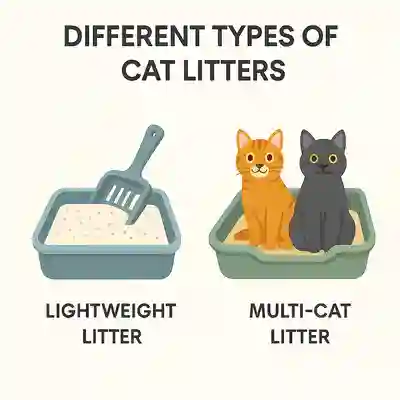
Different Types of Cat Litter Materials
The type of material used in cat litter can significantly impact its performance and your cat’s comfort. Cat litter materials vary widely, including paper-based, wood and pine, corn and wheat, and eco-friendly alternatives.
Paper based Cat Litter
Paper based litters are made from recycled paper products. They are highly absorbent and offer good odor control, making them a viable option for those seeking clumping vs non-clumping cat litter.
Wood and Pine Litters
Wood and pine litters are known for their natural scent and ability to control odor. They are often more affordable and can be a good choice for those looking for odor control cat litter.
Corn and Wheat Litters
Corn and wheat litters are biodegradable and made from renewable resources. They are a good choice for cats with sensitivities and offer a natural alternative.
Eco-Friendly Alternatives
Eco friendly cat litters are made from sustainable materials like recycled paper, coconut husk, and walnut shells. They minimize environmental impact while maintaining performance.
When choosing a cat litter, consider factors like clumping ability and odor control. Clumping litters simplify cleaning, while non-clumping litters are often more budget-friendly. Effective odor control cat litter enhances comfort for both you and your cat.
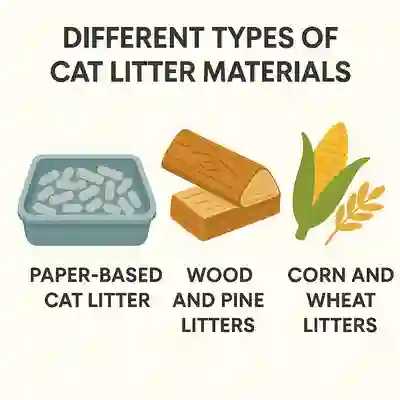
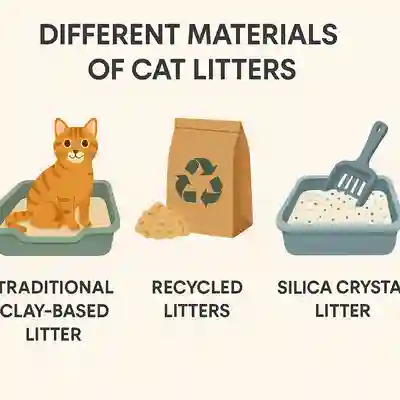
How To Choose The Right Cat Litter
The quest for the ideal cat litter involves balancing your cat’s needs with your own preferences and values. One crucial factor is the litter’s dust level. Cats with respiratory issues can benefit greatly from dust-free cat litter, reducing the risk of exacerbating their condition.
Another significant consideration is the environmental impact of the cat litter. Eco-conscious cat owners may prefer eco-friendly cat litter made from sustainable materials such as recycled paper, pine, or corn. These options not only reduce waste but also minimize the carbon footprint associated with traditional clay litters.
When choosing a cat litter, it’s also essential to consider your cat’s preferences. Some cats may have a strong dislike for certain textures or odors, so it might be necessary to try out a few different types to find the one your cat is most comfortable with.
- Consider your cat’s health needs.
- Assess the environmental impact.
- Evaluate the litter’s performance in odor control and moisture absorption.
By weighing these factors, you can make an informed decision that suits both your cat’s well-being and your personal values, whether that’s opting for a dust-free or an eco-friendly cat litter.
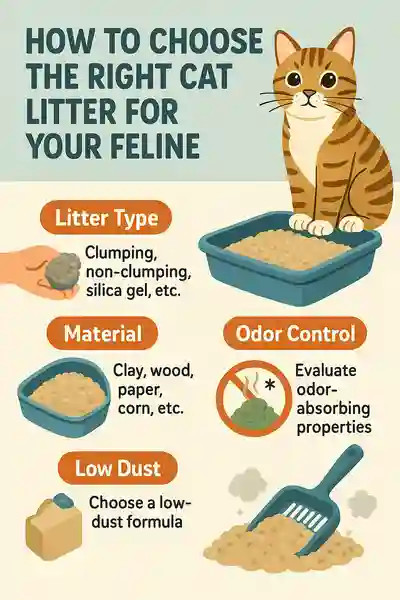
The only thumb rule is to be patient! Good Luck!
Conclusion
Selecting the ideal cat litter is crucial for your feline’s health and happiness. As discussed, understanding the basics and types of cat litter materials is essential. By considering factors such as odor control, dust level, and your cat’s preferences, you can make an informed decision.
Some top-rated cat litters that you might consider include those made from natural materials like pine or corn, which are biodegradable and offer excellent odor control. Brands like Dr. Elsey’s Precious Cat Ultra Premium Clumping Cat Litter and World’s Best Cat Litter are highly regarded for their performance and eco-friendliness. When choosing a top-rated cat litter, remember to consider your cat’s individual needs and your personal preferences to ensure a harmonious and healthy environment.
The right cat litter is cardinal for your cat’s wellbeing. In this article, we will discuss how to choose the right cat litter. There are several different varieties of cat litter available in the market that are primarily made from clay, silica crystal, natural materials, and also some are flushable and scented. You may have to experiment a little before finding the right litter for your cat.
Remember to get the right litter that absorbs unpleasant and pungent odor in your home. With myriads of different choices in the market, we are here to help you with our succinct and quick guide! Also in case your cat doesn’t like the litter and has any adverse reactions, or if she refuses to use her litter box, whilst the litter is being clean, then in that case, you may have to switch brands. It is better to be sure than sorry.
Cats are their own boss and have their own preferences when it comes to litter, so closely pay attention to your cat’s response towards different litter materials.
Key Points to remember –
- Look for odor-absorbing litter. The fundamental concern is to choose a litter that absorbs any pungent smell of your cat’s pee and poop and prevents it from embalming into your sweet home.
- Clumping and non-clumping litter Clumping litter are easy to clean as it absorbs the urine. The litter can be later scooped out rather than replacing entire litter every now and then. However, a major disadvantage of using this litter is it can get stuck with your cat’s paws and get scattered in your home, in case your mischievous furball starts to play with it.
- Simply avoid scented litters we do not prefer scented cat litters as these litters cause severe irritation to cats and many cats even abhor the very smell of scented cat litter.
- Regularly cleaning the litter box we can’t really stress enough the importance of regularly cleaning the litter box as cats like everything clean, and unlike other animals, our feline friends are extremely picky about cleanliness. Some cats even refuse to use a litter box that isn’t cleaned and has old cat poop or any clumped litter in it. The litter should hence be scooped out every day, a minimum of once a day in order to cut down on any unpleasant odors and for keeping your cat comfortable. Also, scrub the litter box every week with soap and hot water, and after the tub dries up, fill it with fresh litter.
- Find dust-free litters, these are safer and much more comfortable for your cat as dust can cause respiratory problems in cats such as sneezing and coughing.
